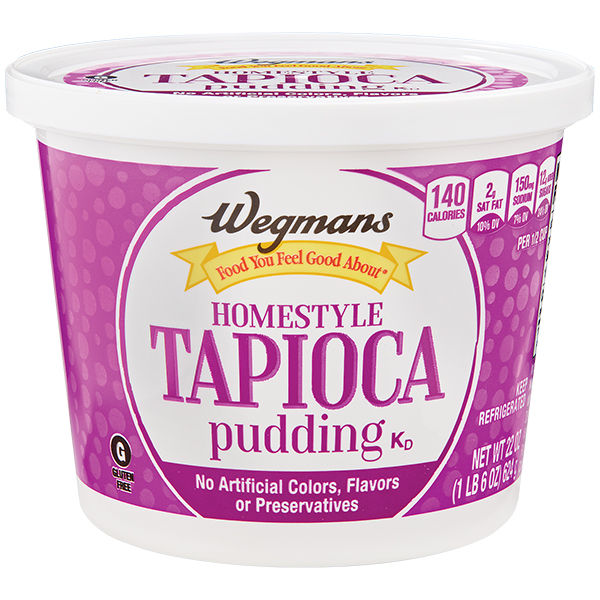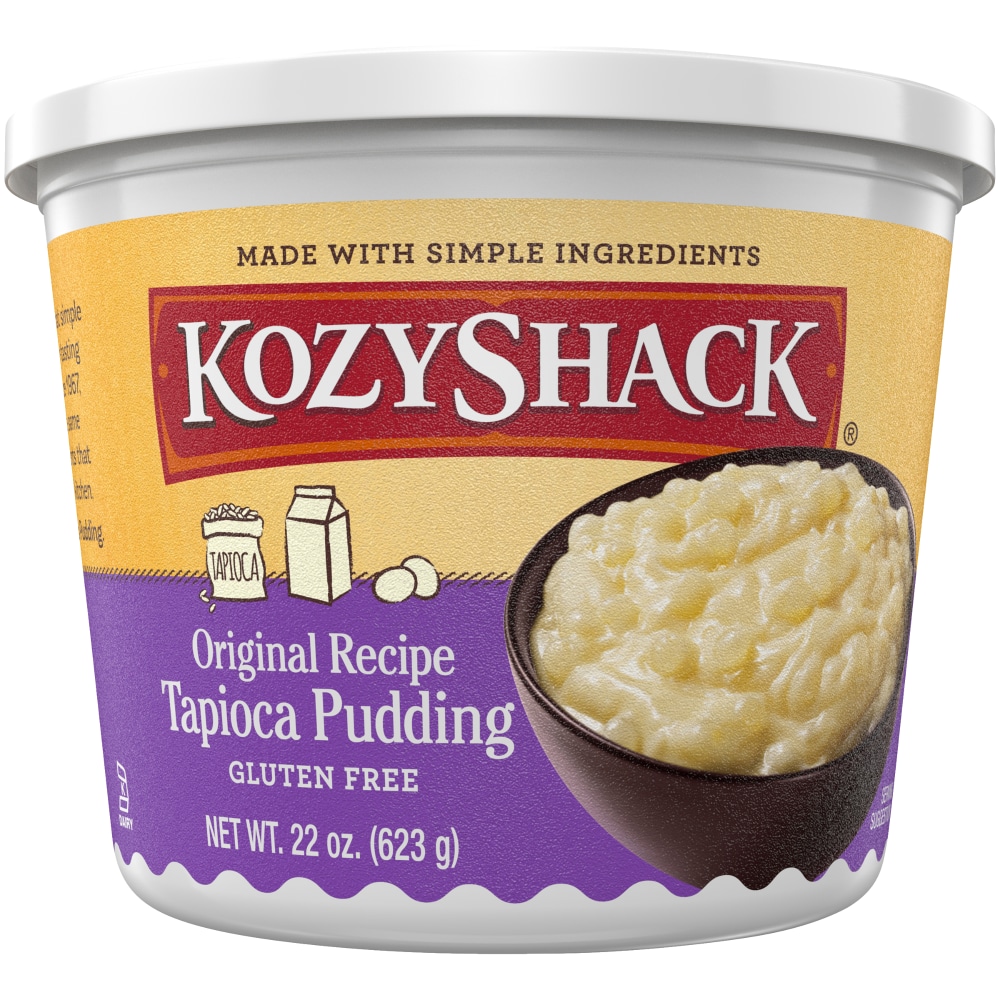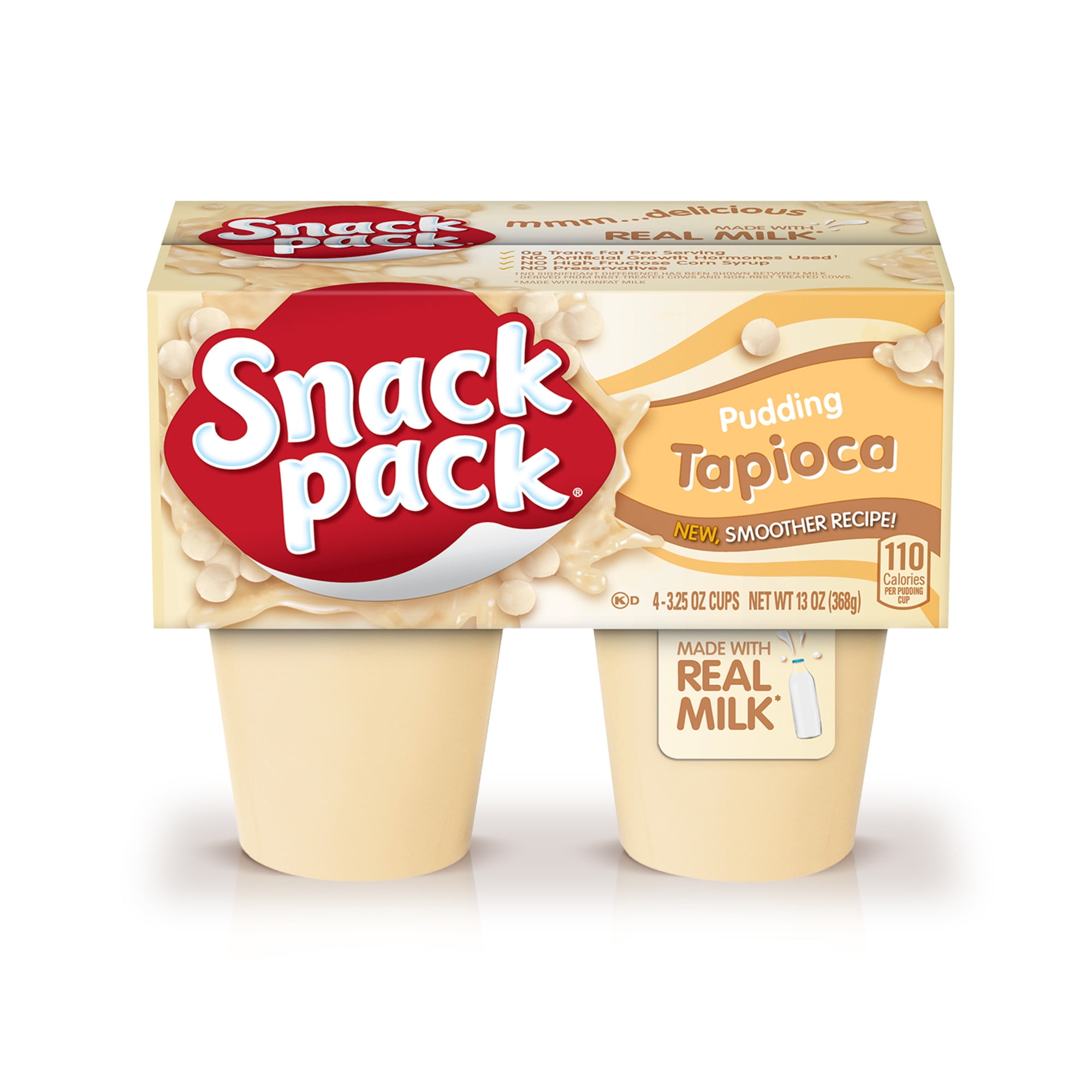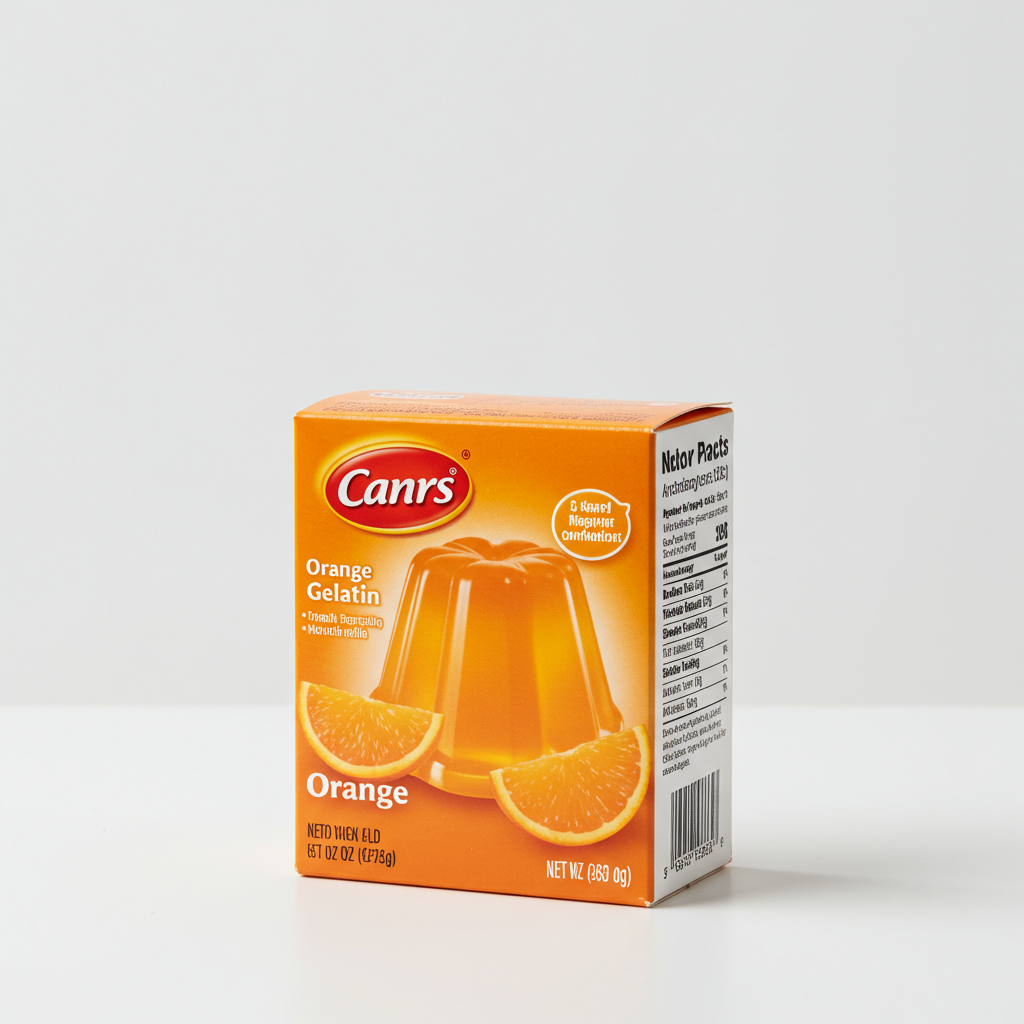DESSERTS
Tapioca Pudding
Tapioca pudding is a delightful, creamy dessert made from tapioca pearls, which are extracted from the roots of the cassava plant. Originating from South America and enjoying global popularity, this smooth-textured dish has become a comfort food staple across many cultures, including in the United States where it is a common item in dessert menus and supermarket shelves.
Easily prepared at home, making tapioca pudding entails boiling the pearls in milk, then adding sugar and often other flavorings such as vanilla or cinnamon to taste. Served either warm or chilled, it appeals to a broad range of palates and is often garnished with fruit or whipped cream.
79%
CARBS
14%
FAT
7%
PROTEIN
176 Tapioca Pudding Products
Kozy Shack Original Recipe Tapioca Pudding
Wegmans Homestyle Tapioca Pudding
Kozy Shack Tapioca Pudding Tub, Gluten Free Dessert
Kozy Shack Simply Well No Sugar Tapioca Pudding Snack Cups
Snack Pack Tapioca Pudding, 4 Count Pudding Cups
Kozy Shack Original Recipe Tapioca Pudding
Snack Pack Tapioca Pudding Cups
Jell-O Original Tapioca Ready-to-Eat Pudding Cups Snack
Kozy Shack Tapioca Pudding Snack Cups, Gluten Free Dessert
Kozy Shack Gluten Free Original Recipe Tapioca Pudding
Tapioca Pudding Is Frequently Used With
Tapioca Pudding FAQ
Tapioca pudding, while a simple dish, can be a mixed bag for first-time cooks. Too often, people struggle with finding the right texture for the pudding or struggle to prevent their pearls from clumping together. Clumping is one of the most common problems when cooking with tapioca and it often arises because the pearls are not stirred continuously during the cooking process. To prevent this, make sure you continuously stir the pearls in boiling water until they become clear. Overcooking can also lead to a mushy, unappetizing texture, so keeping the heat moderate and removing the pot from the stove as soon as the pearls become translucent will help.
Just as important is the soaking process. Before you start cooking, remember to soak the tapioca pearls overnight in room temperature. This help the pearls to expand and soften, therefore reducing the cooking time and making for a more pleasant texture in the finished pudding. Many recipes suggest soaking for at least an hour, some even advocate overnight soaking.
Flavor-wise, you can experiment with the base by using different kinds of milk (almond, soy, coconut etc.) to achieve different flavor profiles. Do remember to add in your sugar or sweetener of choice towards the end of the cooking process to prevent it from burning.
Forgot to soak your pearls beforehand? A little-known trick is to boil them in a pressure cooker for about 10 minutes, then let them sit, still covered, for another 15. This can achieve a similar result to soaking overnight.
Why did my tapioca become mushy?
How long do I have to soak my tapioca pearls?
Do you have to soak tapioca before making pudding?
Why is my tapioca pudding not thickening?
Do I need to rinse the tapioca pearls before cooking?
Can you cook tapioca pearls in milk?
My tapioca pearls are still white in the center, are they properly cooked?
Can I sweeten my pudding with honey instead of sugar?
Can I make tapioca pudding with vanilla almond milk?
Can I add fruit into my tapioca pudding?
Expiration & Storage Tips
When does tapioca pudding expire?
Tapioca pudding usually lasts about 7 days if stored in an airtight container in the refrigerator. Note that this is a conservative estimate and it’s always good to look for signs of spoilage before consumption. This goes for both store-bought and homemade varieties. As for its frozen state, tapioca pudding can be frozen for up to 3 months, but do keep in mind that this could alter its texture when defrosted and reheated.
How do you tell if tapioca pudding is bad?
Signs of spoilage in tapioca pudding can include changes in color, texture, or smell. If the pudding has an off smell or taste, it is best to discard it. Visible mold or a yellowish appearance can also indicate that the pudding is no longer safe to eat. Separation or curdling could mean the milk used in the pudding has turned sour.
Tips for storing tapioca pudding to extend shelf life
• Always store tapioca pudding in an airtight container in the refrigerator. This helps to prevent the pudding from absorbing other odors and flavors, and shields it from airborne bacteria.
• When freezing tapioca pudding, use a freezer-safe container to prevent freezer burn. Also, consider freezing in individual servings for easier defrosting and reheating.
• To thaw frozen tapioca pudding, it's best to move it from the freezer to the refrigerator one day before you plan to consume it. For a quicker thaw, you could also use the defrost function on your microwave, but do this sparingly as it could alter the pudding's texture.
EXPIRES WITHIN
9 - 15
MONTHS
Substitutes
Health Info
Macros
24g
CARBS
4g
FAT
2g
PROTEIN
Allowed on these diets
LOW FAT
HIGH CALCIUM
VEGETARIAN
GLUTEN FREE
Contains these allergens
MILK























